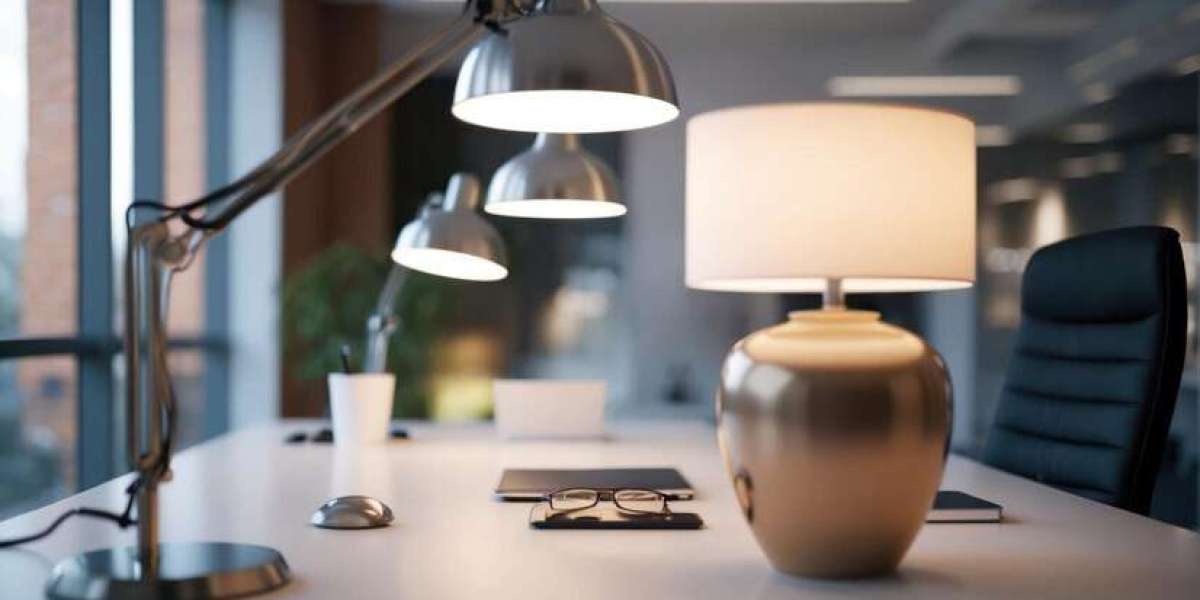When it comes to interior design, lighting plays a pivotal role in setting the ambiance and enhancing the aesthetic of any space. However, the lightbulb alone isn’t enough to create a well-lit, visually pleasing environment. Lamp shades are essential elements that not only diffuse light but also contribute to the overall style of a room. Whether you're upgrading your home decor or outfitting a hotel lobby, selecting the right lampshade is key to achieving your desired effect.
Understanding Lamp Shades: Why They Matter
Before we dive into the specifics of different lamp shade styles, it’s essential to understand the core function of a lamp shade. A lamp shade serves two main purposes:
Light Diffusion: Lamp shades soften the harsh glow of light bulbs, providing a warm, diffused light that’s easier on the eyes. The shape, size, and material of the shade can greatly influence how light is scattered throughout a room.
Aesthetic Appeal: Lamp shades contribute to the room's overall decor. A well-chosen lamp shade can complement a room's theme, whether it's modern, traditional, or eclectic. It also helps to tie together the various elements of the space, such as furniture, colors, and textures.
Let’s explore the different types of lamp shades and what makes each one unique.
Standard Lamp Shades: Classic and Versatile
Standard lamp shades are the most common type of lamp shades found in homes, offices, and public spaces. These shades are available in a variety of shapes, sizes, and materials, offering broad versatility in terms of style and function.
Features of Standard Lamp Shades:
Shape: Standard lamp shades come in various shapes, including drum, empire, and bell. The most popular shape for traditional lamps is the empire shade, which tapers at the top and flares out at the bottom. The drum shade is a cylindrical option that provides a sleek, modern look.
Material: Common materials for standard lamp shades include fabric, linen, and paper. The material affects both the appearance and the quality of light. Fabric shades offer a softer glow, while paper shades may create a sharper, more direct light.
Size: Available in multiple sizes to accommodate various lamp bases, standard shades range from small, tabletop models to large, floor lamp shades.
Where to Use Standard Lamp Shades:
Standard lamp shades are ideal for almost any room in the home, including living rooms, bedrooms, and home offices. Their classic design works well in traditional, transitional, and even contemporary settings. When selecting a standard lamp shade, consider the size of your lamp base and the overall lighting needs of the room.
Designer Lamp Shades: Elevate Your Space with Style
For those looking to make a statement or add an artistic touch to their decor, designer lamp shades are the perfect choice. These high-end shades are crafted by designers and often feature unique materials, patterns, and textures that stand out.
Features of Designer Lamp Shades:
Exclusivity: Designer lamp shades are often one-of-a-kind or produced in limited quantities, offering a level of exclusivity not found in mass-produced options.
Artistry: These shades are carefully designed to incorporate elements of art and fashion, with attention to detail in the design, stitching, and finishing. They often incorporate materials like silk, velvet, or custom prints that elevate the aesthetic of the room.
Customization: Many designers offer custom designs, allowing you to choose specific fabrics, colors, or patterns that fit your personal style and the room’s theme.
Where to Use Designer Lamp Shades:
Designer lamp shades work particularly well in spaces where you want to make a bold statement. Consider placing them in living rooms, dining areas, or private study spaces to add sophistication and style. In hotels or restaurants, designer lamp shades can be used to create a high-end, luxurious feel.
If you’re searching for designer lamp shades that bring both beauty and function to your space, consider brands like Fenchel Shades, known for offering a variety of options that blend quality craftsmanship with modern design sensibilities.
Hospitality Lamp Shades: Functional and Stylish Solutions for Hotels
When it comes to hospitality lighting, hospitality lamp shades need to strike a balance between form and function. Hotel rooms, lobbies, and dining areas require lamp shades that provide ample light while also maintaining a welcoming, comfortable atmosphere.
Features of Hospitality Lamp Shades:
Durability: Hospitality lamp shades are often made from more durable materials than those used in typical home decor. Since these lamps will see frequent use, materials such as polyester, linen blends, and faux silk are common. These materials not only hold up well over time but are also easy to clean and maintain.
Uniformity: In hotel settings, uniformity in design can help create a cohesive, professional look throughout the space. Hospitality lamp shades are often chosen to match the overall decor theme of the hotel, whether it’s modern, classic, or minimalist.
Energy Efficiency: Many hospitality lamp shades are designed to work with energy-efficient bulbs, reducing the overall energy consumption of the space while still providing sufficient lighting.
Where to Use Hospitality Lamp Shades:
Hospitality lamp shades are perfect for use in hotel rooms, lobbies, and conference rooms. These shades help create a cozy, well-lit environment that’s conducive to relaxation or productivity. In restaurants and cafes, they can be used to create an intimate atmosphere with soft, diffused lighting.
Choosing the Right Lamp Shade for Your Space
When selecting a lamp shade, there are a few key factors to keep in mind:
Room Size and Function: Consider the size of the room and how much light is needed. Larger rooms may require larger shades or multiple lamps to distribute light evenly. Smaller rooms may benefit from smaller, more compact shades that add style without overwhelming the space.
Lamp Base and Proportions: The lamp shade should complement the lamp base in both size and shape. A large lamp base may look awkward with a small, delicate shade, while a tiny base may get lost beneath a large, heavy shade.
Material and Texture: Choose a material that suits the atmosphere of the room. Fabric shades can add softness to a space, while metal or glass shades tend to lend a more modern or industrial vibe.
Color and Pattern: For a neutral room, you might choose lamp shades in classic colors like white, beige, or gray. If your room is bold or eclectic, you could choose shades with patterns or brighter colors to create a focal point.
Final Thoughts
Lamp shades are a small but impactful design element in any room, and choosing the right one can enhance both the functionality and the style of your space. Whether you're looking for the practicality of standard lamp shades, the luxury of designer lamp shades, or the durability and uniformity of hospitality lamp shades, there’s a perfect option out there for you. Take the time to explore different materials, styles, and sizes to ensure that your lamp shades are not only beautiful but functional for your lighting needs.
By making thoughtful choices, you'll be able to elevate your home decor or business setting with lighting that complements the atmosphere you want to create.






